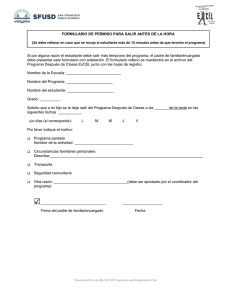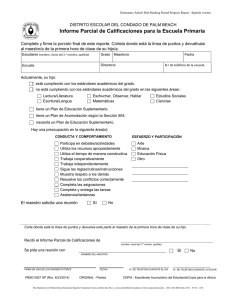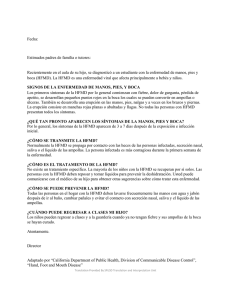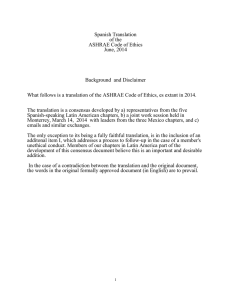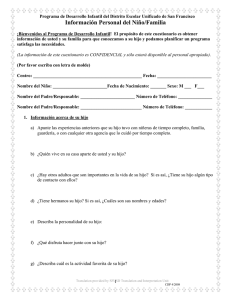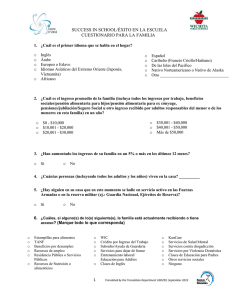MonTI 5 (2013) - ISSN: 1889-4178 The History of Translation within
Anuncio
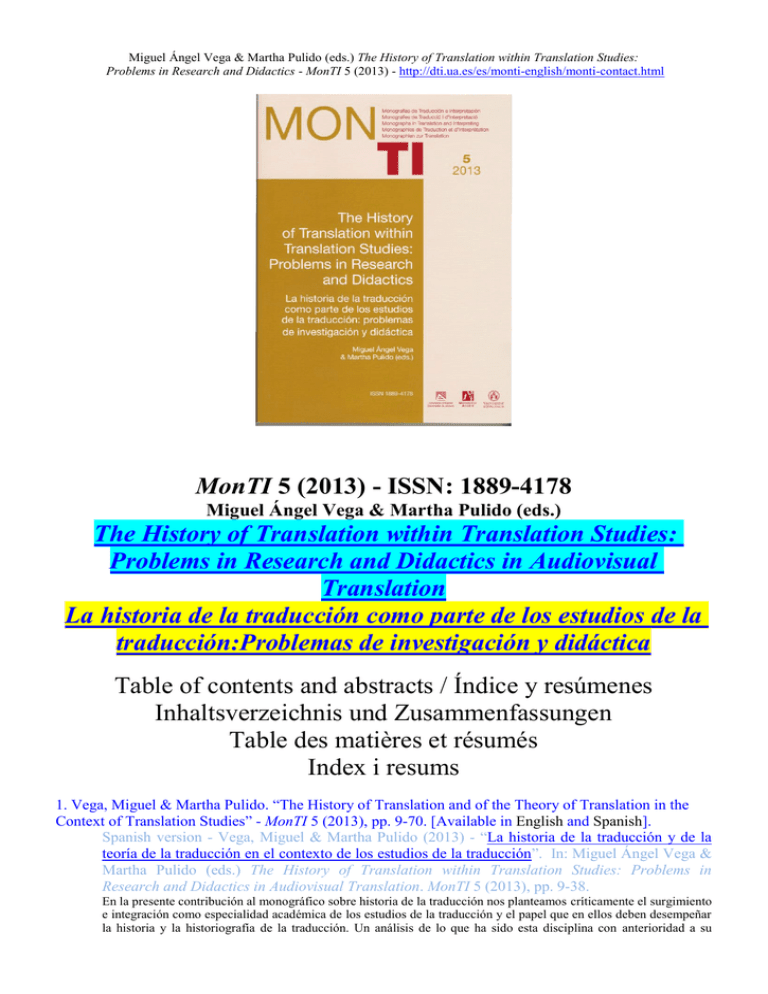
Miguel Ángel Vega & Martha Pulido (eds.) The History of Translation within Translation Studies: Problems in Research and Didactics - MonTI 5 (2013) - http://dti.ua.es/es/monti-english/monti-contact.html MonTI 5 (2013) - ISSN: 1889-4178 Miguel Ángel Vega & Martha Pulido (eds.) The History of Translation within Translation Studies: Problems in Research and Didactics in Audiovisual Translation La historia de la traducción como parte de los estudios de la traducción:Problemas de investigación y didáctica Table of contents and abstracts / Índice y resúmenes Inhaltsverzeichnis und Zusammenfassungen Table des matières et résumés Index i resums 1. Vega, Miguel & Martha Pulido. “The History of Translation and of the Theory of Translation in the Context of Translation Studies” - MonTI 5 (2013), pp. 9-70. [Available in English and Spanish]. Spanish version - Vega, Miguel & Martha Pulido (2013) - “La historia de la traducción y de la teoría de la traducción en el contexto de los estudios de la traducción”. In: Miguel Ángel Vega & Martha Pulido (eds.) The History of Translation within Translation Studies: Problems in Research and Didactics in Audiovisual Translation. MonTI 5 (2013), pp. 9-38. En la presente contribución al monográfico sobre historia de la traducción nos planteamos críticamente el surgimiento e integración como especialidad académica de los estudios de la traducción y el papel que en ellos deben desempeñar la historia y la historiografía de la traducción. Un análisis de lo que ha sido esta disciplina con anterioridad a su Miguel Ángel Vega & Martha Pulido (eds.) The History of Translation within Translation Studies: Problems in Research and Didactics - MonTI 5 (2013) - http://dti.ua.es/es/monti-english/monti-contact.html academización y unas propuestas de lo que debe ser su función en el interior de unos planes de estudios orientados a la formación humanística del futuro profesional son derivados de una percepción a todas luces insatisfactoria de su situación como saber académico. Dada la especificidad de la situación hispanoamericana (en ninguna otra región del mundo ha desempeñado la traducción un papel más identitario), añadimos un apéndice sobre el estado de la historia de la traducción en la región. English version - Vega, Miguel & Martha Pulido (2013) - “The History of Translation and of the Theory of Translation in the Context of Translation Studies”. In: Miguel Ángel Vega & Martha Pulido (eds.) The History of Translation within Translation Studies: Problems in Research and Didactics in Audiovisual Translation. MonTI 5 (2013), pp. 39-70. In the present contribution to the History of Translation we consider critically the emergence and integration of Translation Studies as an academic discipline and the role of both Translation History and Translation Historiography. An analysis of what this discipline was before its acceptance into academia and proposals for what its role should be within a humanistic oriented curriculum for future professionals derives from the reception, clearly unsatisfactory, of its status as academic knowledge. Given the specificity of the Latin American situation (in no other region of the world translation has played a greater identitary role), we have added an appendix on the History of Translation in the region. 2.a. Martino Alba, Pilar (2013). “Propuesta de didactización de contenidos de Historia de la traducción para la formación del traductor” / “A proposal for a course on the History of Translation for a humanistic translator training”. In: Vega, Miguel & Martha Pulido (eds.) The History of Translation within Translation Studies: Problems in Research and Didactics in Audiovisual Translation. MonTI 5 (2013), pp. 71-96. [Available in Spanish and English]. Resumen español: La formación humanística inherente al traductor tiene uno de sus pilares en el conocimiento de la historia de la disciplina. En el proceso de enseñanza-aprendizaje, el futuro traductor tiene la oportunidad de ampliar su cosmovisión y aprender a manejar la lanzadera del telar de conocimiento enciclopédico que le permitirá tramar sus textos con artesanal y artística destreza, siendo éste uno de los objetivos de nuestra propuesta. Para ello, optamos por una didactización de contenidos, cuya metodología permita un aprendizaje constructivo en el que, en primer lugar, tras unas pinceladas presentadas a través de una selección de imágenes que hacen visible la actividad traductora, se propone una distribución cronológica por grandes periodos históricos, basándose en conocimientos culturales previos. En cada uno de dichos periodos, se analizan los contextos histórico-sociales y políticos a través de los textos; para adentrarse después en las biografías, sacando a la luz a los actores del proceso traductor; y, por último, se lleva a cabo el análisis, debate y comentario de los textos de los traductores, bien producto de la reflexión sobre su quehacer o bien de la reescritura y recepción de su obra. Así, pues, proponemos una visión circular y constructivista de la historia de la traducción que hace el recorrido mencionado por contexto, actor y texto tejiéndolos en un telar común, donde el hilo conductor de la historia de la traducción forma la trama del tapiz. English abstract: History of Translation should be considered a fundamental issue and one of the founding areas in the formative years of a translator. Within the teaching-learning process, the prospective translator has the opportunity to expand his/her worldview and learn how to handle the tapestry of encyclopedic knowledge which will allow weaving the texts with artistic skills and real craftsmanship. This constitutes the main objective of my proposal. The approach I take here extends beyond the introduction of chronological distribution divided into major historical periods. In each of them, I analyze the historical, sociological and political contexts based on texts and biographies which enable highlighting the real actors of the translation process. Finally, this approach leads toward the analysis and comments on the texts, those being the product of reflections on the translators’ work. Thus, I propose a circular vision of the History of Translation, starting with a debate on the iconographic symbols which show clearly the translator’s activity and, subsequently, drawing the circle mentioned previously, across the areas of context, actor and text. 3. Ordóñez López, Pilar & José Antonio Sabio Pinilla (2013). “Contribución al estudio historiográfico de la traducción. Propuesta de un manual de lecturas guiadas y sus aplicaciones” / “A contribution towards the historiographical study of translation. A proposal for a translation historiography reader”. In: Vega, Miguel & Martha Pulido (eds.) The History of Translation within Translation Studies: Problems in Research and Didactics in Audiovisual Translation. MonTI 5 (2013), pp. 97-116. [Available in Spanish and in English]. Resumen español: Tras el auge experimentado en los últimos años por las antologías que recogen el discurso de la traducción a lo largo del tiempo, parece llegado el momento de reflexionar sobre el tipo de investigación histórica que se está haciendo en Miguel Ángel Vega & Martha Pulido (eds.) The History of Translation within Translation Studies: Problems in Research and Didactics - MonTI 5 (2013) - http://dti.ua.es/es/monti-english/monti-contact.html nuestros días. En esta línea, defendemos en este artículo la necesidad de elaborar un manual de lecturas guiadas de historiografía de la traducción que proporcione algunas claves para entender la pluralidad y el dinamismo de nuestra disciplina. Dentro de la tradición del reader, la obra cumpliría una función eminentemente pedagógica e incluiría una muestra representativa y bien contextualizada de la investigación producida en el campo histórico de la traducción en los últimos cuarenta años. English Abstract: Following an increase in the publication of anthologies focusing on the diachronic dimension of translation discourse in recent years, it seems timely to consider the historical research that has been carried out in this area in the last decades. The present article argues that there is a need to compile a translation historiography reader that serves to provide some keys to understanding the evolution of this multi-faceted and dynamic discipline. In line with the traditional remit of this genre, the proposed reader will have a mainly pedagogical function and will contain a wellcontextualised selection of texts representative of research in the area of the History of Translation over the past forty years. 4. Pérez Blázquez, David (2013). “Examen crítico de la bibliografía sobre la historia de la traducción en España” / “Critical review of the bibliography on the History of Translation in Spain”. In: Vega, Miguel & Martha Pulido (eds.) The History of Translation within Translation Studies: Problems in Research and Didactics in Audiovisual Translation. MonTI 5 (2013), pp. 117-137. [Available in Spanish and in English]. Resumen español: El artículo aborda de forma crítica y sucinta el recorrido de los estudios sobre historia de la traducción en España, partiendo tanto de los hitos bibliográficos como del recuento de la producción investigadora menor. Ante la dispersión temática existente y el incremento que durante las últimas décadas han experimentado estos estudios, la presente revisión historiográfica pone de manifiesto la necesidad de realizar en futuros trabajos una síntesis periodificadora y clasificadora que pueda ofrecer una perspectiva panorámica y práctica para la investigación y teorización. English abstract: This article deals critically and succinctly with the development of the studies on translation history in Spain, starting from counting the bibliographic production (research, studies, articles, publications, etc.). Given the existing thematic dispersion and the increase that these studies have experienced in the last few decades, this historiographic review highlights the need for a synthesis in future works establishing periods and classification in order to provide a panoramic and practical view to research and theorizing. 5. Sánchez Galvis, Jairo. (2013) “Una lectura dialectal de la historia de la traducción” / “A dialectal reading of the History of Translation”. In: Vega, Miguel & Martha Pulido (eds.) The History of Translation within Translation Studies: Problems in Research and Didactics in Audiovisual Translation. MonTI 5 (2013), pp. 139-164. [Available in Spanish and in English]. Resumen español: La traducción de variedades dialectales es uno de los retos más difíciles y a la vez interesantes que enfrentan los traductores literarios. Si bien los aportes teóricos acerca de la traducción dialectal surgen principalmente a partir de 1960, el presente artículo propone una lectura histórica de la traductología desde la antigüedad hasta la primera mitad del siglo XX indagando acerca de las “implicaciones” que los grandes hitos traductológicos hubieran podido tener para la traducción de dialectos. Ya que los textos dialectales se conciben dentro de una jerarquización política de la lengua, se propone un paralelismo entre ‘dialecto-estándar’ y ‘lengua vernácula-lengua dominante’. Se rastrea y analiza igualmente el surgimiento de términos y movimientos relevantes para la traducción dialectal como extranjerización, literalismo y orientalización, entre otros. English abstract: The translation of dialect is one of the most difficult and yet interesting challenges facing literary translators. Although theoretical contributions about dialect translation develop mainly from 1960, this article proposes a historical reading of the history of translation from antiquity to the first half of the 20th century, inquiring about the “implications” that the milestones of translation might have had on the translation of dialect. Since dialect texts are conceived within a political hierarchy of language, a parallelism is established between ‘dialect-standard’ and ‘vernacular language-dominant language’. The emergence of terms and practices relevant for dialect translation (foreignization, literalism, orientalism, etc.) is also traced and analyzed. Miguel Ángel Vega & Martha Pulido (eds.) The History of Translation within Translation Studies: Problems in Research and Didactics - MonTI 5 (2013) - http://dti.ua.es/es/monti-english/monti-contact.html 6. Wakabayashi, Judy. (2013) “Evaluating Historical Views on Translation: A Case Study of Motoki Ryōei, Early Japanese Theorist”. In: Vega, Miguel & Martha Pulido (eds.) The History of Translation within Translation Studies: Problems in Research and Didactics in Audiovisual Translation. MonTI 5 (2013), pp. 165-191. [Available in English]. The first part of this paper revisits the rationale for examining historical views on translation and offers examples of questions that can help researchers—particularly those new to the study of translation history—contextualize and evaluate historical writings on translation. The second part applies some of these questions to a study of the relatively unknown writings of Motoki Ryōei, an eighteenth-century Japanese translator of European scientific works, in an indirect attempt to demonstrate how such questions, although best combined with a more holistic framework, can help researchers delve beyond the obvious historical facts. 7. Serrano Bertos, Elena. (2013) “Un déficit documental en la historiografía de la traducción en España: consideraciones acerca del teatro (austriaco) representado y no editado” / “A deficiency of documentation in translation historiography in Spain: reflections about performed but unpublished (Austrian) theatre”. In: Vega, Miguel & Martha Pulido (eds.) The History of Translation within Translation Studies: Problems in Research and Didactics in Audiovisual Translation. MonTI 5 (2013), pp. 193-211. [Available in Spanish and in English]. Resumen en español: Nuestro trabajo tiene como objetivo llamar la atención sobre la importancia de recuperar la literatura traducida no editada en España en aras de una mayor exhaustividad a la hora de escribir la historia de la traducción. En este contexto, nos referimos a aquellas traducciones de obras teatrales austriacas que llegan a nuestro país de forma efímera a través de sus distintas representaciones, por lo que estas se convierten en el único medio de recepción. Nos proponemos establecer una clasificación para este tipo de traducción, así como atender a las variaciones que se producen en el texto durante la puesta en escena de la obra. English Abstract: The aim of this article is to underline the importance of recovering translated but unpublished literature in Spain in order to contribute to the exhaustiveness of translation history. In this article I specifically deal with the recovery of Austrian translated plays with an ephemeral existence in Spain through various performances that have been their only means of reception. This article aims to classify this kind of translation and to consider the shifts that take place in the texts when they are staged. 8. Paloposki, Outi. (2013). “Translation History: Audiences, Collaboration and Interdisciplinarity” In: Vega, Miguel & Martha Pulido (eds.) The History of Translation within Translation Studies: Problems in Research and Didactics in Audiovisual Translation. MonTI 5 (2013), pp. 213-239. [Available in English]. Translation history constitutes a huge field of research where methods, theories, research questions and topics vary widely. One important question here is who we write history to (who is our addressee) and what kind of an impact the perceived audience has on the ways of writing history. In the case of academic audiences, an audience often is also a partner in research collaboration. However, there are other audiences outside the academia as well. In this article, I will illustrate the issue of audiences and interdisciplinarity through describing the work done in translation historiography in Finland. There have been scholars and writers from different academic disciplines and orientations and from outside the academia, involved in Finnish historiography. Among the products of this collaboration is the history of translated literature, published as a book in 2007. 9. Bacardí, Montserrat. (2013). “Traduir sota la dictadura franquista, traduir clandestinament: Poesia (1944-1945) i Ariel (1946-1951)” / “Clandestine translations during Franco’s dictatorship: Poesia (19441945) and Ariel (1946-1951)”. In: Vega, Miguel & Martha Pulido (eds.) The History of Translation within Translation Studies: Problems in Research and Didactics in Audiovisual Translation. MonTI 5 (2013), pp. 241-256. [Available in Catalan and in English]. Resum en catalá: Acabada la guerra civil, la dictadura de Francisco Franco va prohibir les traduccions al català durant una dècada, fins al 1948, en què van aparèixer l’Odissea de Carles Riba i la Divina Comèdia de Josep M. de Sagarra en condicions molt restrictives. Aquestes condicions es van mantenir pràcticament inalterables fins al 1962, quan va deixar de practicar-se la censura lingüística prèvia davant la demanda de publicar qualsevol traducció catalana. En la dècada dels quaranta, quan la persecució era més severa, van sortir a llum dues revistes clandestines en català, Poesia (19441945) i Ariel (1946- 1951), que van traduir regularment una selecció de l’obra dels noms canònics de la literatura occidental, sense negligir l’aportació de la contemporaneïtat, les avantguardes i les novetats més recents. Miguel Ángel Vega & Martha Pulido (eds.) The History of Translation within Translation Studies: Problems in Research and Didactics - MonTI 5 (2013) - http://dti.ua.es/es/monti-english/monti-contact.html English Abstract: After the Spanish Civil War, Francisco Franco’s dictatorship banned Catalan translations for a decade. But in 1948, Carles Riba’s version of the Odyssey and Josep Maria de Sagarra’s version of the Divine Comedy were published, albeit with severe restrictions. These restrictions remained virtually unchanged until 1962, when the regime began allowing the publication of Catalan translations without prior censorship. In the 1940s, when the repression was at its fiercest, two underground journals in Catalan, Poesia (1944-1945) and Ariel (1946-1951), regularly translated a portion of some of the classics of Western literature, and also published contemporary and avant-garde material as well as the most recent works. 10. Ruiz Casanova, José Francisco. (2013) “‘El arte de la traducción’, según Alejandro Cioranescu” / “‘El arte de la traducción’, by Alejandro Cioranescu”. In: Vega, Miguel & Martha Pulido (eds.) The History of Translation within Translation Studies: Problems in Research and Didactics in Audiovisual Translation. MonTI 5 (2013), pp. 257-270. [Available in Spanish and in English]. Resumen en español: La labor de Alejandro Cioranescu (1911-1999) como estudioso de la Literatura Comparada se desarrolla en España desde la década de los cincuenta. Cioranescu no es sólo autor del primer manual moderno sobre Literatura Comparada escrito en español sino que su interés por los temas relativos a esta disciplina (intercambios, contactos, traducción) se mantuvo presente a lo largo de más de cuatro décadas en su bibliografía española. Este trabajo recupera un artículo del filólogo rumano que bien podría entenderse como su ideal para la traducción literaria. English Abstract: Alexandru Cioranescu’s work (1911-1999) as a researcher in Comparative Literature was developed in Spain since the fifties. Cioranescu is not only the author of the first modern manual of Comparative Literature written in Spanish but his interest in the issues pertaining to this discipline (exchanges, contacts, translation) was constant over more than four decades in his Spanish bibliography. This article retakes one of the Romanian philologist’s articles that may well be seen as an expression of his ideal of literary translation. 11. García Albero, Javier. (2013) “Aspectos históricos de las traducciones y traductores del Quijote en Alemania en el siglo XX” / “Historical aspects of the translations and translators of the Quixote in Germany in the 20th century”. In: Vega, Miguel & Martha Pulido (eds.) The History of Translation within Translation Studies: Problems in Research and Didactics in Audiovisual Translation. MonTI 5 (2013), pp. 271-286. [Available in Spanish and in English]. Resumen en español: Afirmar que toda Alemania conoce el Quijote, que por todas partes circulan traducciones de la obra, no es nada nuevo. Que el lector medio sepa cuántas traducciones existen o cuándo se llevó a cabo la versión que está leyendo, es algo extraño. Y más extraño todavía es que el lector sepa quién ha sido el traductor, a no ser que se trate de los “traductores estrella” de la literatura alemana, en el caso del Quijote, Ludwig Tieck, en otros casos, por ejemplo, August Wilhelm Schlegel, Arthur Schopenauer, Walter Benjamin o Stefan Zweig. Pero junto a estas “estrellas” ha habido un sinnúmero de buenos traductores a los que no se ha prestado la atención que quizá merecen. Nuestro trabajo pretende recuperar algunos aspectos olvidados o no conocidos de las tres traducciones del Quijote que se realizaron en el siglo XX y, ante todo, de sus traductores. Ofreceremos con ello ciertos detalles interesantes sobre estos personajes y sobre las condiciones en que llevaron a cabo su labor. English Abstract: There is nothing new in saying that everyone in Germany knows Don Quixote, and that one can find translations of this work everywhere. But it is strange for the average reader to know how many translations there are or when the translation he is reading was done. And it is even stranger for the reader to know who the translator was if he is not one of the “star translators” of German literature, in the case of Don Quixote, Ludwig Tieck, in other cases for example August Wilhelm Schlegel, Arthur Schopenhauer, Walter Benjamin or Stefan Zweig. However, beyond these “stars” there has been a large amount of good translators that have not been paid the attention they might deserve. This article tries to recover some forgotten or unknown details of the three German translations of the Quixote in the 20th century and, above all, of its translators. Some interesting details will be presented about these personalities and about the conditions under which they carried out their job. Miguel Ángel Vega & Martha Pulido (eds.) The History of Translation within Translation Studies: Problems in Research and Didactics - MonTI 5 (2013) - http://dti.ua.es/es/monti-english/monti-contact.html 12. Majstorovic, Gorica. (2013) “Literature of the Americas in the Making: U.S. Writers and Translation in Sur, 1931-1944”. In: Vega, Miguel & Martha Pulido (eds.) The History of Translation within Translation Studies: Problems in Research and Didactics in Audiovisual Translation. MonTI 5 (2013), pp. 287-298. [Available in English]. This essay engages history of translation by examining one of its most important contributors: Sur, a literary journal that Victoria Ocampo ran for 45 years and 340 issues. The most celebrated Latin American writers of the 1960s ‘Boom’ unanimously recognized that their key literary influences were those that they had first read in translation in Sur. Specifically, the essay focuses on the translations of North American literature in Sur’s early years: E. Hemingway, M. Twain, L. Hughes, K. A. Porter, E. A. Poe, H. Melville, e. e. cummings, W. Whitman, H. James, and most prominently, W. Faulkner, are translated by J. L. Borges, E. Pezzoni, J. Bianco, R. Baeza, BioyCasares, and M. Acosta. While highlighting the task of translators as crucial cultural intermediaries, the essay analyzes the subsequent construction of inter-American relations and ways in which Sur (1931-1976) conceived a peculiar version of cosmopolitanism. 13. Lafarga, Francisco. (2013) “La traducción de piezas extranjeras como vía hacia la modernidad en el teatro español del siglo XVIII” / “The translation of foreign playwrights as a step towards modernity in 18th century Spanish drama”. In: Vega, Miguel & Martha Pulido (eds.) The History of Translation within Translation Studies: Problems in Research and Didactics in Audiovisual Translation. MonTI 5 (2013), pp. 299-324. [Available in Spanish and in English]. Resumen en español: Tras analizar las alusiones al teatro extranjero en el siglo XVIII español, así como los distintos intentos de renovación del teatro español en la época, en los que la referencia al teatro extranjero fue una constante, el autor se detiene particularmente en la incorporación, mediante la traducción, de varios modelos franceses (tragedia, comedia moralizante o de costumbres, ópera cómica, etc.), que alcanzaron éxito desigual, condicionado en ocasiones por la fuerza de la tradición teatral. A pesar de las dificultades, contribuyeron a la tan deseada reforma del teatro, modulando un proceso de transformación de las formas y los temas, en la vía de la modernidad. English Abstract: After analysing the attempts at renewing Spanish drama in the 18th century, together with the numerous allusions to foreign drama in this period, attention is paid to the assimilation, by means of translation, of a number of French models (tragedies, comedies of manners, pieces of opéra-comique, etc.), which reached an uneven success, determined as it was by the influence of theatrical tradition. In spite of difficulties, these models contributed to a highly desired reform of drama by means of a transformation of both forms and topics, much in accordance with modernity. 14. Lépinette, Brigitte. (2013). “Traduction et terminologie. A propos de deux versions espagnoles (Madrid, 1800) de la Logique de Dumarsais” / “Translation and terminology. Apropos of two Spanish versions of Dumarsais’ Logique (Madrid, 1800)” / “Traducción y terminología. A propósito de dos versiones al español de la Logique (Madrid, 1800) de Dumarsais”. In: Vega, Miguel & Martha Pulido (eds.) The History of Translation within Translation Studies: Problems in Research and Didactics in Audiovisual Translation. MonTI 5 (2013), pp. 325-347. [Available in English, French and Spanish]. Résumé: Cette étude qui relève du domaine de la traduction philosophique (lato sensu) a pour objet deux versions de la Logique de Dumarsais ([1769]1797) éditées en Espagne (1800). Nous montrons que ces deux Lógicas, oeuvres de deux traducteurs différents, qui eurent chacun des fins également différentes, comme le prouvent le contexte bibliographique et les métatextes respectifs, manifestent la présence d’une terminologie espagnole divergente pour les termes clé de la théorie de la connaissance que l’auteur français exposa dans les pages initiales de sa Logique. La première de ces traductions, qui attribue à la logique un rôle d’introduction aux sciences, choisit des termes systématiquement calqués sur ceux de Dumarsais tandis que J. M. Alea (1781-1826) argumente l’emploi d’une terminologie spécifique, non concordante avec celle du texte source. Ces infidélités terminologiques (et in fine idéologiques) de J. M. Alea peuvent s’expliquer par le désir de ce traducteur de mettre à jour une théorie de la connaissance qu’il voudra rendre conforme à celle de Condillac. English Abstract: This work, framed in the field of philosophical translation (lato sensu), deals with two different versions of the Logique by Dumarsais ([1769]1797) published in Spain (1800). We show that these two Lógicas, translated by two different persons, who also had distinct purposes as evidenced by their respective bibliographical context and metatexts, contain separate Spanish terminologies regarding the key words of Dumarsais’ theory of knowledge, as set in the first few pages of his Logique. The first one of these translations, which grants logic an introductory role to Miguel Ángel Vega & Martha Pulido (eds.) The History of Translation within Translation Studies: Problems in Research and Didactics - MonTI 5 (2013) - http://dti.ua.es/es/monti-english/monti-contact.html sciences, systematicaly chooses terms copied from Dumarsais, whereas J. M. Alea (1781-1826) argues in favor of the use of a specific terminology, not coincidental with the one used in the primary text. J M. Alea’s terminological (and philosophical) infidelities may be explained by the wish of this translator to update a theory of knowledge inspired by Condillac’s conceptions. 15. Beyer, Stefan. (2013). “Los ritmos y la rima de la versificación goetheana en las versiones métricas del Fausto en español” / “Goethean rhymes and rhythms in verse translations of Faust into Spanish”. In: Vega, Miguel & Martha Pulido (eds.) The History of Translation within Translation Studies: Problems in Research and Didactics in Audiovisual Translation. MonTI 5 (2013), pp. 349-363. [Available in Spanish and in English]. Resumen español: Los pocos traductores que han intentado hacer una traducción en verso del Fausto de Goethe no han logrado, en la mayoría de los casos, hacer justicia a la diversidad métrica de la obra del autor alemán. Algunos han abandonado por completo la idea, e.g. Pedro Gálvez en 1984, mientras que otros han creado un poema con métrica tradicional del español tomándose libertades excesivas en cuanto al contenido original del Fausto, tal como sucede en la versión de 1882 de Teodoro Llorente o en las de Valverde (1963) y Silvetti Paz (1970), quienes han empleado, en algunos casos, versos que parecen pentámetros yámbicos sin rima, una medida inusual en la poesía en español y que sin embargo resulta en ocasiones sorprendentemente efectiva. Sin embargo, una traducción que resalta entre todas las versiones métricas existentes del Fausto es la de Augusto Bunge (1926, 1949), quien estudió y analizó cuidadosamente la estructura métrica de esta obra y creó una versión en español que imita las complejas rimas y patrones métricos de Goethe y, a su vez, permanece en gran parte fiel al contenido del texto original en alemán. English abstract: The few translators who have attempted a Spanish verse translation of Goethe’s Faust for the most part fail to do justice to the metrical diversity of Goethe’s play and therefore they either altogether give up the idea of rendering Goethe’s play in poetry, e.g. Pedro Gálvez in 1984, or they create a traditionalist Spanish Faust poem with excessive liberties regarding its content, like, in 1882, Teodoro Llorente. Others have tried to fit Goethe’s verse in the Procrustean bed of unrhymed endecasílabos, which has forced them to abridge the original text in numerous passages (Valverde 1963). Moreover, some authors, such as Valverde and Silvetti Paz (1970), translate some passages of Goethe’s magnum opus into Spanish verses resembling unrhymed iambic pentameter, a rather unusual approach in Spanish poetry, but nevertheless surprisingly effective. The translation which clearly stands out is the one by Augusto Bunge (1926, 1949), who carefully studied and analyzed the metrical structure of Faust and created a Spanish version which imitates Goethe’s complex rhythms and rhyme patterns while remaining largely faithful to the German original. 16. Castro, Nayelli & Clara Foz. (2013) “La circulación de las ideas positivistas en Argentina y en México: editores y traductores (1850-1950)” / “Positivism on the move: translators and publishers in Mexico and Argentina from 1850 to 1950”. In: Vega, Miguel & Martha Pulido (eds.) The History of Translation within Translation Studies: Problems in Research and Didactics in Audiovisual Translation. MonTI 5 (2013), pp. 365-388. [Available in Spanish and in English]. Resumen español: La historiografía sobre el tema ha mostrado que la introducción de la filosofía de Auguste Comte en Latinoamérica dio lugar a un positivismo profundamente heterogéneo. Su combinación con los escritos de Herbert Spencer, Charles Darwin y John Stuart Mill, la circulación de impresos, tanto en lengua original como en traducción, y el desarrollo de un mercado editorial internacional a fines del siglo XIX son algunos de los factores que contribuyen a explicar dicha heterogeneidad. El presente trabajo estudia la circulación de las ideas positivistas en Argentina y en México desde la perspectiva de los editores y traductores activos entre 1850 y 1950, un periodo clave para la organización política de los nuevos Estados latinoamericanos y para la constitución de sus instituciones educativas. English abstract: Historians have demonstrated that after its introduction to Latin America, Auguste Comte’s philosophy became an eclectic Positivism. Its combination with the writings of Herbert Spencer, Charles Darwin, and John Stuart Mill, the circulation of printed materials in their original language and in translation, as well as the development of an international publishing market in the late 19th century are some of the factors that contribute to explain this eclecticism. This paper studies the flow of Positivist ideas in Mexico and Argentina from the perspective of its publishers and translators, in a period that is fundamental for the organization of the new Latin American States and their educational policies (1850-1950).

